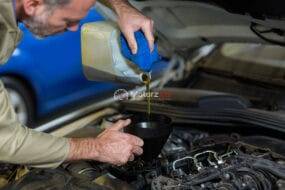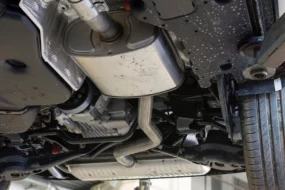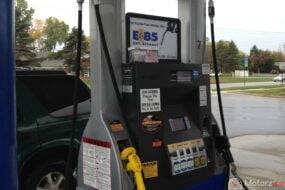Fuel Pump Failure Signs and replacement steps. can be a daunting issue for any vehicle owner, as it directly impacts the engine’s performance and overall functionality. Recognizing the signs of a failing fuel pump is crucial to prevent unexpected breakdowns and costly repairs. In this comprehensive article, we will explore the common signs of fuel pump failure and provide step-by-step guidance on how to replace a faulty fuel pump.
Engine Sputtering:
One of the initial signs of a Fuel Pump Failure is the engine sputtering at high speeds or under heavy loads. If you notice your vehicle jerking or hesitating during acceleration, it could be an indication of insufficient fuel reaching the engine. A weakened fuel pump may result in a noticeable loss of power during acceleration. If your vehicle struggles to maintain speed or respond promptly to throttle input, the fuel pump might be at fault.
Surging Engine:
Conversely, a faulty fuel pump can cause the engine to surge unexpectedly. This erratic behavior often occurs due to inconsistent fuel delivery, disrupting the engine’s smooth operation. A struggling fuel pump may make it challenging for the engine to start. If you experience prolonged cranking before the engine fires up, it could be a sign of insufficient fuel pressure.
Engine Stalling:
Random engine stalling, especially at low speeds or idling, is a red flag for potential fuel pump issues. The pump may not be providing a consistent flow of fuel needed to keep the engine running smoothly .A failing fuel pump often produces a high-pitched whining noise, indicating increased strain on the motor. If you hear unusual sounds coming from the fuel tank area, it’s wise to inspect the fuel pump.
Decreased Fuel Efficiency:
A drop in fuel efficiency can be attributed to various factors, and a failing fuel pump is one of them. If you notice a sudden decrease in miles per gallon, consider having the fuel pump inspected. Modern vehicles are equipped with onboard diagnostics that trigger the check engine light when detecting irregularities. A failing fuel pump can lead to a check engine light activation, alerting the driver to a potential issue.
Ensure Safety:
Prioritize safety by parking the vehicle on a level surface, engaging the parking brake, and disconnecting the battery to prevent electrical mishaps. Before removing the fuel pump, relieve the fuel system pressure by either disconnecting the fuel pump fuse or relay and running the engine until it stalls or by using a fuel pressure gauge.
Remove Access Panel:
Access the fuel pump by locating the access panel typically found under the rear seat or in the trunk. Remove the panel to expose the fuel pump assembly. Disconnect the electrical connections to the fuel pump, including the wiring harness and any electrical connectors. Be prepared for some residual fuel to escape, so have a container and rags on hand.
Remove the Old Fuel Pump:
Unbolt the old fuel pump from its mounting bracket and carefully lift it out of the fuel tank. Take note of the pump’s orientation to ensure correct installation of the new unit. Place the new fuel pump into the mounting bracket, securing it in place with the appropriate bolts. Turn the ignition key to the “on” position without starting the engine. Check for any leaks and ensure proper operation before starting the engine. Reinstall the access panel and any components removed during the process. Reconnect the battery, start the engine, and take the vehicle for a test drive to confirm that the new fuel pump functions correctly.
Conclusion:
Recognizing the signs of fuel Fuel Pump Failure and addressing the issue promptly can save vehicle owners from the inconvenience of unexpected breakdowns. While replacing a fuel pump may seem like a complex task, following the outlined steps can guide you through the process, ensuring a smooth and efficient replacement. Regular maintenance and prompt attention to fuel system issues are key to keeping your vehicle running reliably and avoiding costly repairs in the long run.





